The ultimate guide to bears: bear facts and information for kids and adults. On this page you’ll find out what makes a bear a bear, the different species of bear, where bears live, bear habitat, what bears eat and the threats faced by the world’s bear population.
You’ll also meet all eight living species of bear.
Free Bears Question Sheet
Test your knowledge of bears with this FREE question sheet (pdf file, 1.2 MB). If you can answer all of the questions then consider yourself a bear expert! (An answer sheet can be found here.)
Bear Facts: The Ultimate Guide To Bears: Index
- Introduction
- What Is A Bear?
- Animals Related To Bears
- Characteristics Of Bears
- What Do Bears Eat?
- Do Bears Hibernate?
- Where Do Bears Live?
- Bear Habitat
- Meet The 8 Species Of Bear
- Threats To Bears
- Bear Charities
- Related Pages On Active Wild
- See awesome bear gifts, books and films at WildGateway.com
Bear Facts: The Ultimate Guide to Bears: Introduction
Bears capture our imagination in a way that few other animals can. They are a symbol of the wild, often living in remote, inhospitable regions. They are true survivors, incredibly strong and adaptable; able to exist in a wide range of habitats and conditions.
Bears are similar to us in several ways; they’re mammals, they’re omnivores, they even look vaguely human when standing on their hind legs. Perhaps this explains the popularity of toys such as teddy bears and of children's stories featuring bear characters.
However, as anyone who has walked in areas inhabited by bears will know, wild bears are far removed from the cuddly, harmless characters they are often portrayed as being.
Although most bears are omnivores, many are quite capable of capturing their own prey. Bears have very few natural predators, and most species sit either near to, or at the very top of their respective food chains. The largest bears are almost 10 ft. (3 m) tall when standing on their hind legs, and are immensely strong.
Yet even bears, mighty as they are, face an uncertain future. Of the eight species of bear, six have the conservation status ‘Vulnerable’. At the bottom of the page, you'll find out about the threats being faced by the world's bears.
What Is A Bear?
- A bear is a mammal
- A bear is a member of the family Ursidae
- Bears are in the order Carnivora
A bear is a mammal. Like all mammals, bears are endotherms* (i.e. they are warm-blooded), they have hair and sweat glands, and females feed their young with milk produced by mammary glands (mammals get their name from the Greek word, mamma).
- You can find out more about mammals here: Mammals: The Ultimate Guide
* An endotherm’s body is able to control its own temperature, for example by shivering in the cold or by sweating when it’s too hot. Ectotherms (cold-blooded animals) such as reptiles are unable to control their own body temperatures.
Ursidae: The Bear Family
A bear is a member of the animal family Ursidae, which is also known as ‘the bear family’. Members of this family are known as ‘ursids’.
There are eight living species of bear. They range in size from the mighty polar bear (on average the largest species of bear) to the sun bear (the smallest species of bear).
- You'll find pictures and facts on every species of bear further down the page.
Animals Related To Bears
An animal family such as Ursidae contains animals that are closely related. Another type of animal group is an order. An order contains animals that, while not being as closely related to each another as those in a family, still share certain similarities. Bears are in the order Carnivora.
As well as bears, the order Carnivora also contains animal families such as Canidae (dogs), Felidae (cats), Mustelidae (weasels), as well as the Pinnipedia, a group that contains animals such as seals and walruses.
All of the different members of the order Carnivora share the same meat-eating ancestors. A member of Carnivora can be identified by its specialized meat-eating teeth.
An order such as Carnivora can itself can be split into smaller groups called suborders. The members of a suborder are more closely related to each other than the members of an order, but not as closely related as members of a family.
- You can find out more about how animals are grouped here: Animal Classification
Carnivora is divided into two suborders: Caniformia and Feliformia.
Bears are members of the suborder Caniformia, which means ‘dog-like’. Other members of Caniformia include the dog family, the pinnipeds, and a group of animals known as musteloids, which includes the weasels, raccoons, skunks and the red panda. (Despite its name, the red panda is not a true bear.)
The members of Caniformia are the animals most closely related to bears.
Characteristics of Bears
- Large size & powerful build
- Thick fur
- Short tail
- Long snout
- Acute sense of smell
- No whiskers
- Non-retractable claws
- Plantigrade – i.e. they walk with their feet flat on the ground (unlike animals such as dogs, who walk on their toes).
- Males significantly larger than females
- Males play no part in raising the cubs
- Able to stand on hind legs
- Able to sit up straight
What Do Bears Eat?
Despite their meat-eating ancestry, most bears are omnivores (eaters of both plants and meat).
Bears such as brown bears and American black bears have extremely varied diets. These species are highly adaptable, able to modify their diets depending on the seasonal availability of food.
Plant matter including roots, bulbs and flowers, and invertebrates such as worms and insects, are all readily consumed by the bears. They will also eat both carrion and the meat of animals that they have captured themselves.
In northern regions, the annual salmon run is an important source of nourishment. The world's biggest brown bears live in areas where salmon can be caught in large numbers.
The diets of other bears are more specialized. The most carnivorous bear is the polar bear. Its diet consists almost entirely of meat, especially that of seals. The most herbivorous bear is the panda. 99% of a panda’s diet consists of bamboo. The sloth bear is largely insectivorous (insect-eating), and has a number of adaptations for hunting insects such as termites.
Bear Facts: Do Bears Hibernate?
One of the most widespread misconceptions about bears is that they hibernate. In fact, bears do not truly hibernate. Instead, during the winter months, many species of bear retreat into dens. Here they will enter a deep sleep known as ‘winter sleep’. This behavior is sometimes called ‘denning’.
While denning, the bear does not eat, drink, urinate or defecate (i.e. pee or poop). During this time, the bear’s metabolic rate (the rate at which energy is used by the body) will drop. However, unlike true hibernators, the bear’s body temperature does not fall significantly.
Beware: even in winter, a sleeping bear is easily woken!
Where Are Bears Found?
Most bears are found in the Northern Hemisphere (i.e. the half of the planet north of the Equator). Only the spectacled bear is native to the Southern Hemisphere.
Bears are found as far north as the Arctic Circle and as far south as northern Argentina.
Bear Habitat
Bears are found in a wide variety of habitats, from the Arctic pack ice (polar bear) to high-altitude South American rainforests (spectacled bear). Bears are extremely adaptable, and can move from habitat to habitat throughout the course of a year.
Several species of bear (e.g. the American black bear) lead arboreal (tree-dwelling) lifestyles. Their claws and limbs are adapted for climbing, and they are found in forest environments. Other species (e.g. the brown bear) prefer more open environments.
Meet the 8 Species of Bear
There are eight species of bear. Together they make up the family Ursidae. In this section of Bear Facts: The Ultimate Guide to Bears, we’ll meet each of them.
Follow the links to find out more about a particular species of bear!
American Black Bear
- Scientific Name: Ursus americanus
- Conservation Status: Least Concern
- Where Found: North America
Notes: there are more American black bears than all other bear species combined. The American black bear has as arboreal (tree-dwelling) lifestyle. It has shorter, sharper claws than the brown bear. This is an adaptation for climbing trees. A subspecies of American black bear is occasionally born with creamy-white fur. Individuals with this coloration are known as ‘spirit bears’.
- You can find out more about this species here: American Black Bear
Asian Black Bear
- Scientific Name: Ursus thibetanus
- Conservation Status: Vulnerable
- Where Found: Asia
Notes: The Asian black bear is closely related to the American black bear, and the two species are similar in size and appearance. The Asian bear, like the sun bear and sloth bear, has a pale marking on its chest. It is thought that this mark may act as a warning, as all three species evolved alongside tigers. If the bear rears up on its hind legs and displays its chest, even a tiger may have second thoughts about attacking!
- You can find out more about this species here: Asian Black Bear
Brown Bear
- Scientific Name: Ursus arctos
- Conservation Status: Least Concern
- Where Found: North America, Asia, Europe
Notes: the range (i.e. the area in which it is found) of the brown bear is larger than that of any other bear. It is present in North America, Europe and Asia. Brown bear subspecies such as the Kodiak bear are almost as large as (or even larger than) the polar bear. One of the best-known brown bear subspecies is the fearsome grizzly bear, which is found in the United States and Canada.
- You can find out more about this species here: Brown Bear
Panda
- Scientific Name: Ailuropoda melanoleuca
- Conservation Status: Vulnerable
- Where Found: China
Notes: The black and white panda is one of the world’s best-known animals. It’s hard to believe that the panda – whose diet consists almost entirely of bamboo – is a member of Carnivora and a relative of grizzly and polar bears.
In fact, the panda is the most distantly-related, and oldest, of all bear species. The panda has a number of adaptations for eating bamboo. These include thumb-like bones in its paws and powerful jaw muscles.
- You can find out more about this species here: Panda
Polar Bear
- Scientific Name: Ursus maritimus
- Conservation Status: Vulnerable
- Where Found: within the Arctic Circle in North America and Europe
Notes: the polar bear is found further north than any other species of bear. It lives on the polar ice packs, where it hunts seals. It is considered to be a marine mammal because it spends most of its time either in or near the sea.
- You can find out more about this species here: Polar Bear
Sloth Bear
- Scientific Name: Melursus ursinus
- Conservation Status: Vulnerable
- Where Found: Indian Subcontinent
Notes: the sloth bear is primarily insectivorous (insect-eating). Its long, strong claws are adaptations for breaking into termite mounds rather than for fighting. However, the sloth bear is no pushover. Having evolved alongside tigers, its primary defensive behavior is to attack a potential predator rather than to flee. For this reason it is regarded as being extremely dangerous to humans.
- You can find out more about this species here: Sloth Bear
Spectacled Bear
- Scientific Name: Tremarctos ornatus
- Conservation Status: Vulnerable
- Where Found: The Andes, South America
Notes: Found further south than any other species of bear, the spectacled bear is the only bear found in South America. It is almost entirely herbivorous and lives an arboreal (tree-dwelling) lifestyle.
- You can find out more about this species here: Spectacled Bear
Sun Bear
- Scientific Name: Helarctos malayanus
- Conservation Status: Vulnerable
- Where Found: Southeast Asia
Notes: The sun bear is the world’s smallest bear. It has dark fur and a pale, crescent-shaped mark on its chest. It is also known as the honey bear due to its love of honey. Its tongue – the longest of any bear – helps it to gather food such as honey and grubs from trees.
- You can find out more about this species here: Sun Bear
Threats to Bears
Of the eight living species of bear, only two (the brown bear and American black bear) have the conservation status ‘Least Concern’ and are not currently threatened. (The conservation status of each bear is produced by the IUCN.)
The primary threats to bears are habitat loss and hunting. Even the ranges of brown and American black bears have been substantially reduced by human incursion into their territory. In other parts of the world, rapid increases in human populations have led to large scale loss of traditional bear habitat.
In Asia, bears are hunted not only for their meat, but also for certain body parts, which are used in traditional eastern medicines.
Bear Conservation & Charities
A number of groups and charities exist to promote bear conservation and welfare. You can find out more about some of them below.
Vital Ground work to ‘protect and restore North America’s grizzly bear populations for future generations’.
The Black Bear Conservation Coalition aims to 'promote the restoration of the Louisiana Black Bear in its historic range through education, research, and habitat management.'
Polar Bears International exists 'to help secure a future for polar bears across the Arctic'.
The Bornean Sun Bear Conservation Centre aims to 'to provide care and rehabilitation to rescued sun bears and increase awareness of sun bears internationally.'
There are many more bear charities in addition to those listed above. Why not get involved and help secure a future for these amazing animals?
Related Pages on Active Wild
- Discover more amazing animals from all around the world: A to Z Animals
- Find out about mammals: Mammals: The Ultimate Guide
- Become an animal expert: Animals: The Ultimate Guide


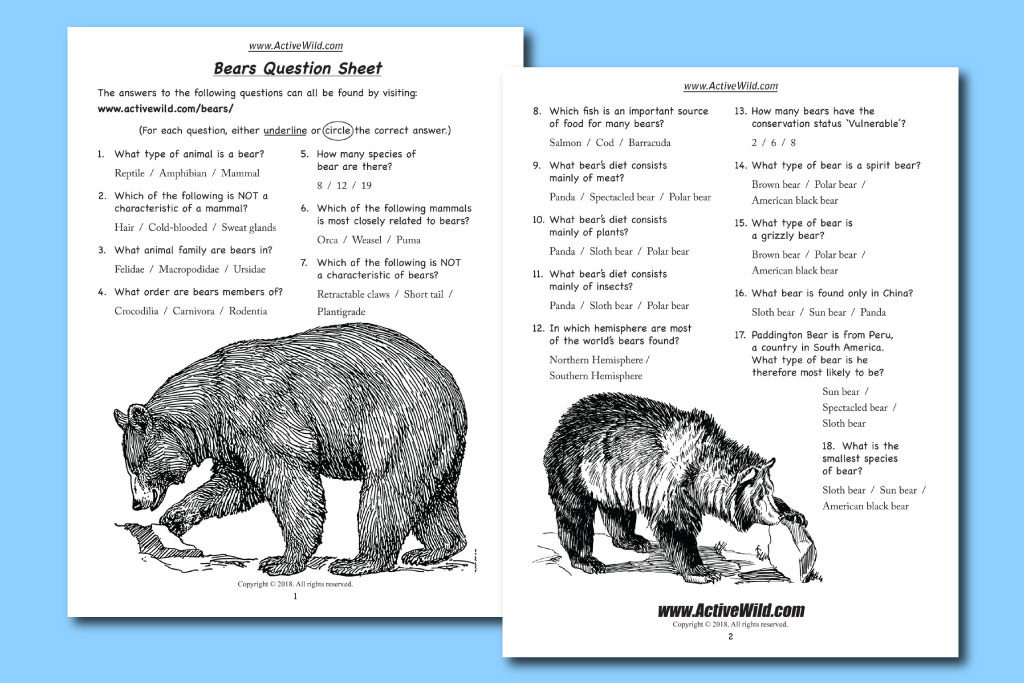


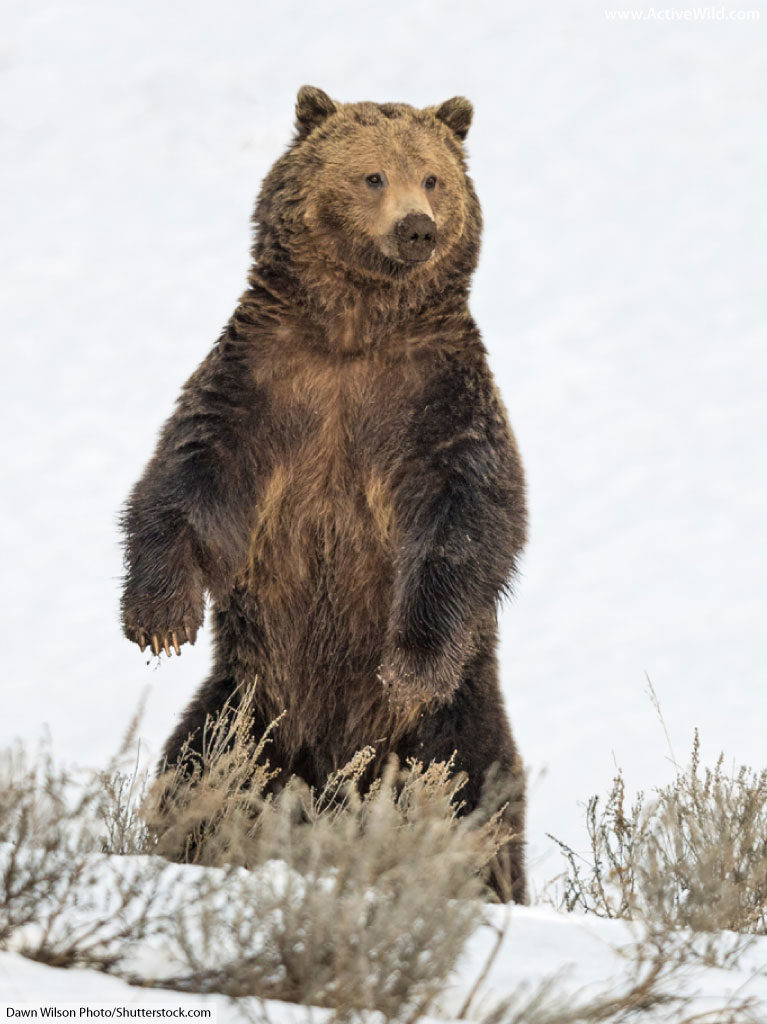


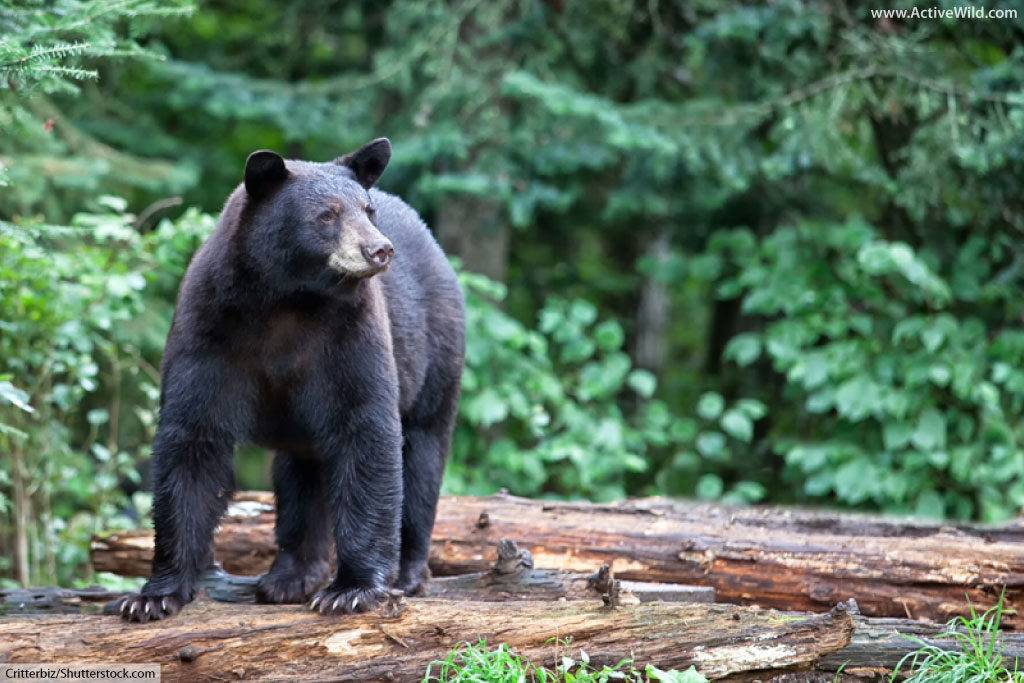
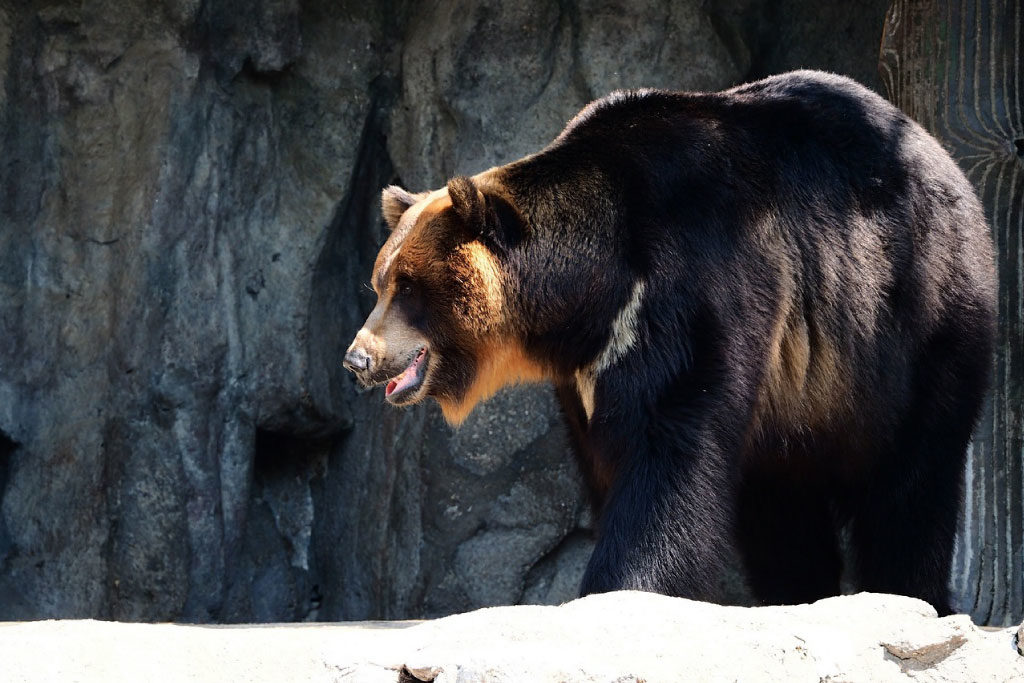

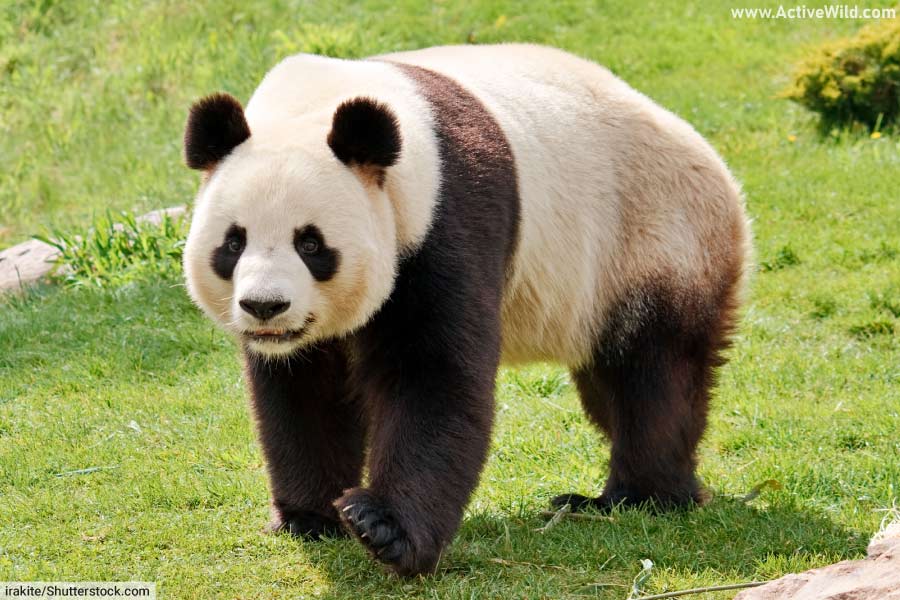
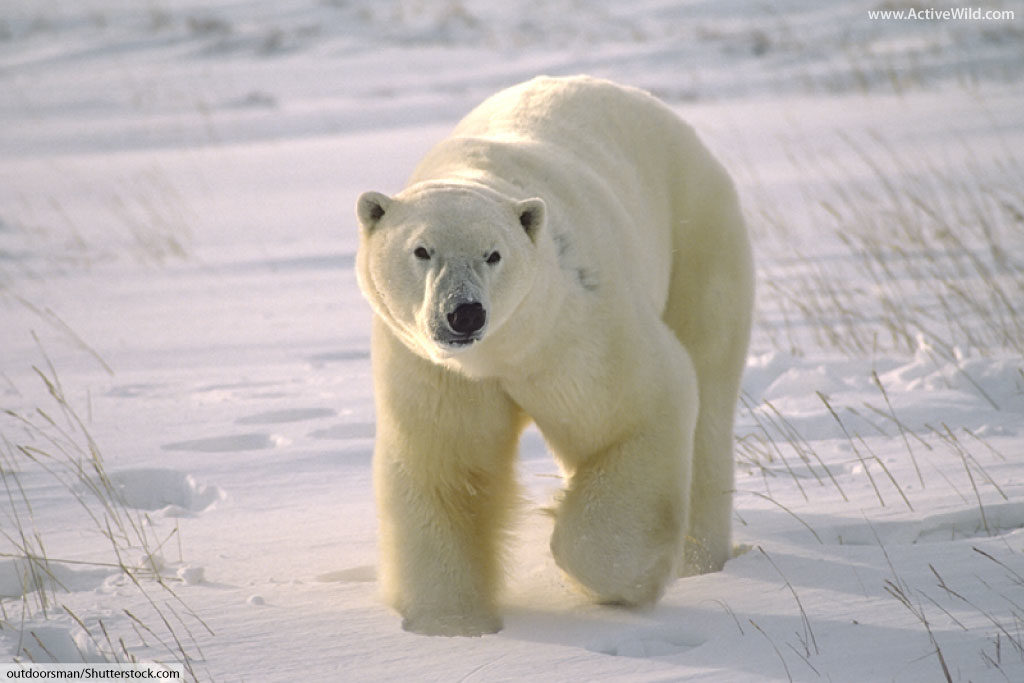
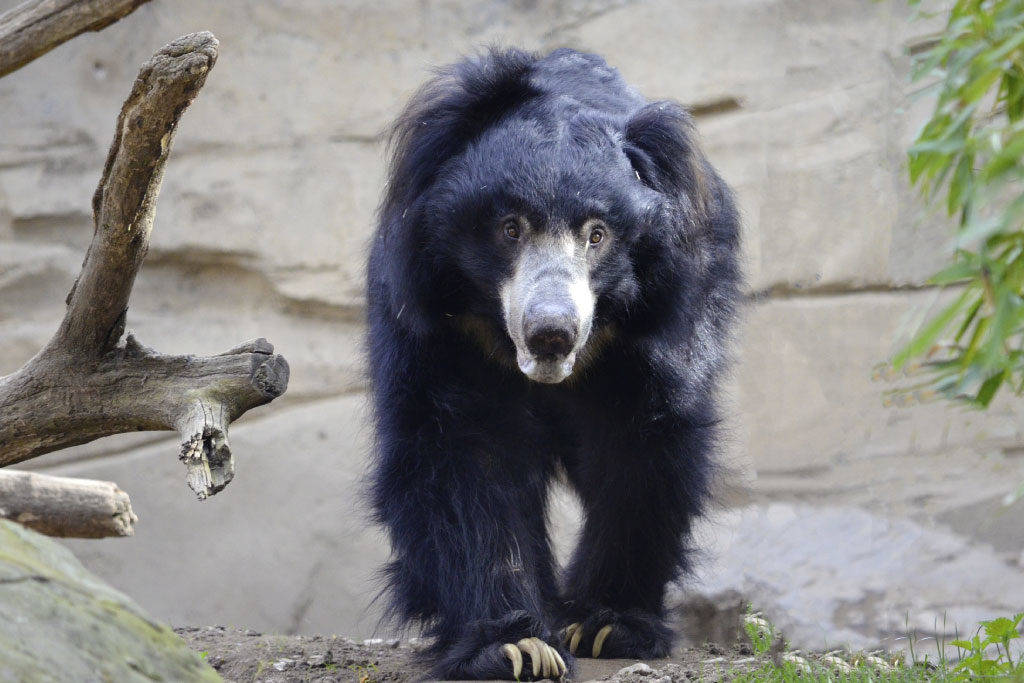

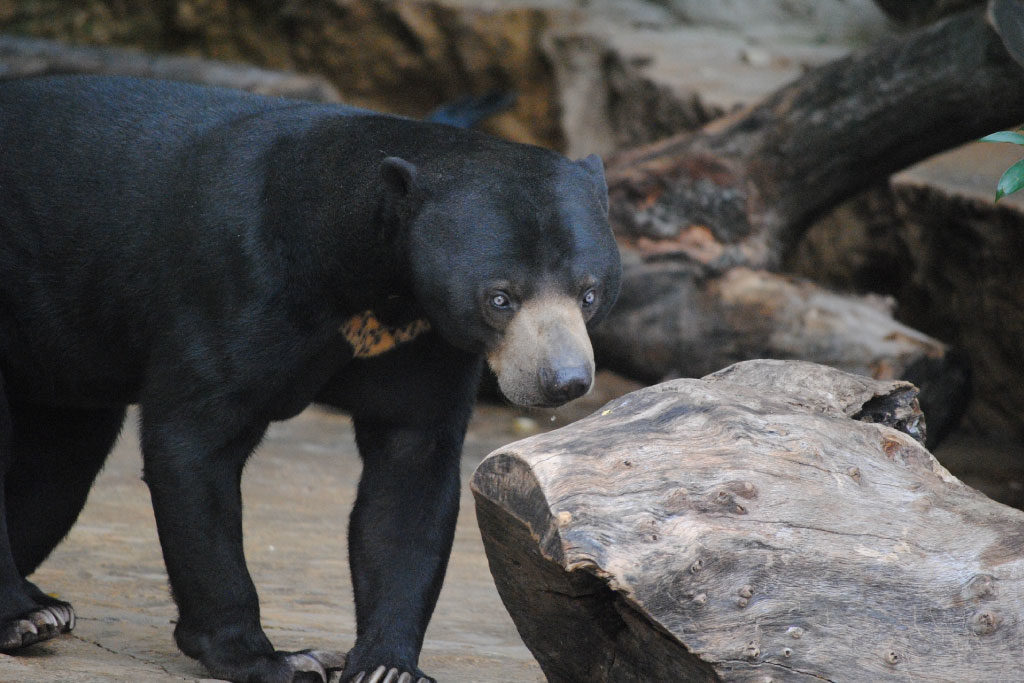
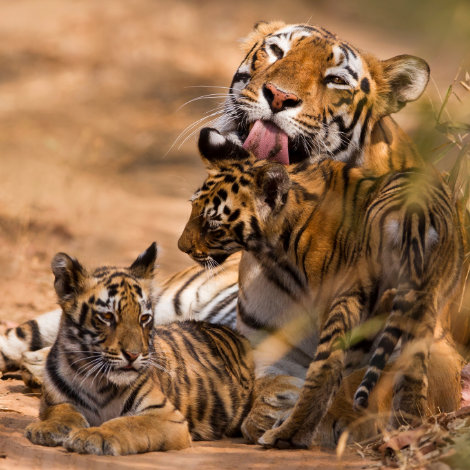
thank u for this information! and website so much